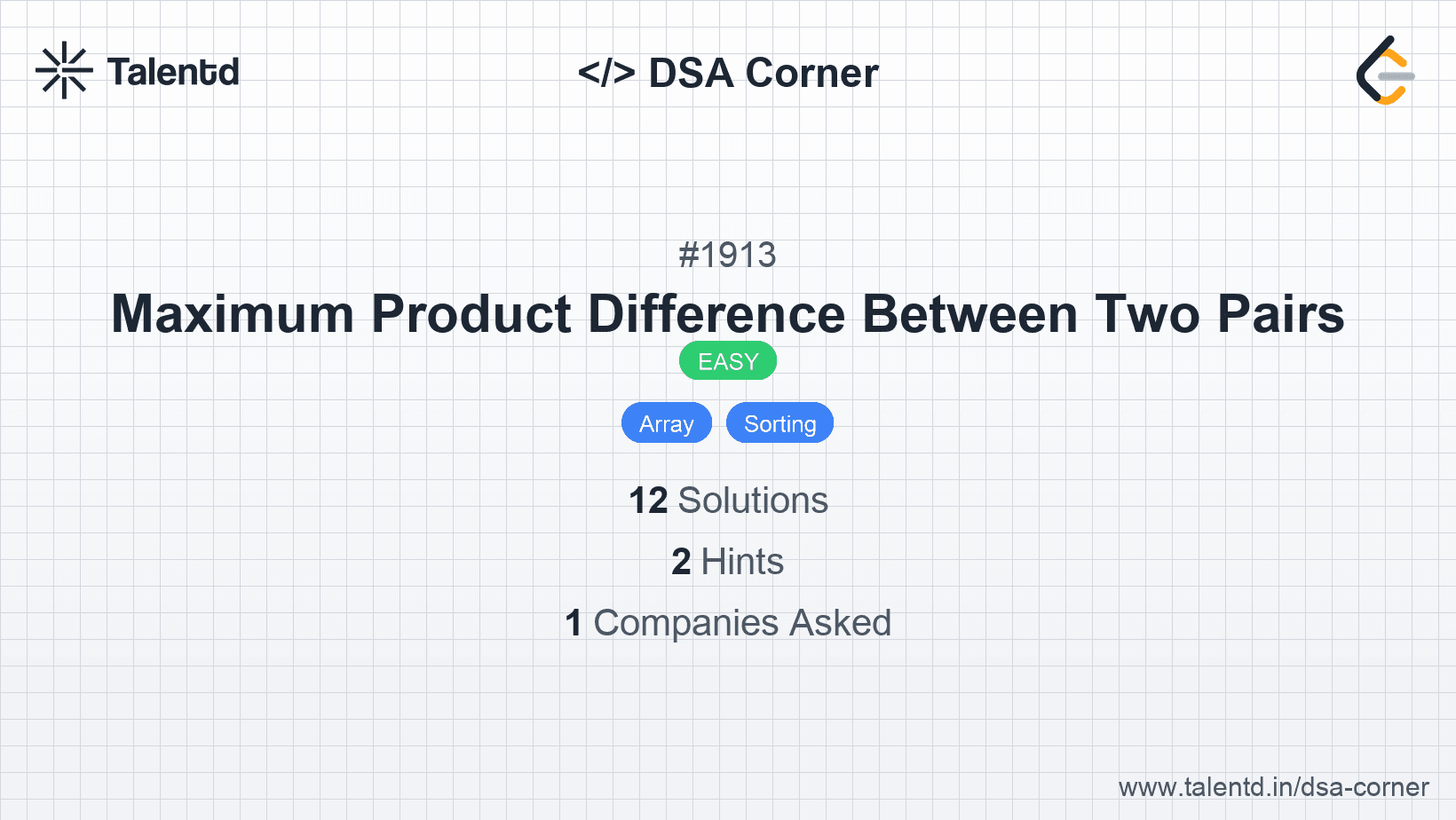
Sponsored
Sponsored
This approach involves sorting the array and then selecting the appropriate numbers to form two pairs. The largest two numbers should form one pair to maximize the product, and the smallest two numbers should form the other pair to minimize the product. This ensures that the product difference is as large as possible:
1. Sort the array nums.
2. Select the two largest numbers for (a, b) and the two smallest numbers for (c, d).
3. Compute the product difference as (a * b) - (c * d).
Time Complexity: O(n log n) due to sorting the array, where n is the length of the array.
Space Complexity: O(1) as we sort the array in place and use a constant amount of extra space.
1import java.util.Arrays;
2
3public class MaxProdDifference {
4 public static int maxProductDifference(int[] nums) {
This Java solution sorts the array with Arrays.sort() and calculates the maximum product difference by selecting products of the largest and smallest pairs.
Instead of sorting, we can solve the problem in linear time by keeping track of the four numbers we need: the two largest numbers and the two smallest numbers:
1. Initialize variables to hold the minimum two and maximum two values seen so far.
2. Iterate through the array, updating these variables accordingly.
3. Calculate the product difference with the two largest and two smallest values obtained.
Time Complexity: O(n) since we traverse the array only once.
Space Complexity: O(1) because we use a constant amount of space.
This Python solution uses four variables to determine the largest and smallest pairs in a single, linear pass, thereby avoiding the overhead of sorting.